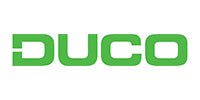Energy Savings in Commercial Buildings: The Role of MVHR Units

When it comes to commercial buildings, both indoor air quality and energy efficiency are huge priorities. An innovative technology that’s increasingly being adopted across offices, retail spaces and industrial buildings is the commercial MVHR system, also known as a mechanical ventilation with heat recovery system. These systems not only provide a steady supply of fresh air but also play an important role in reducing energy consumption, creating healthier, more comfortable environments for employees and customers alike.
What is a Commercial MVHR System?
A commercial MVHR system is designed to extract stale air from inside a building while simultaneously supplying fresh and filtered air. The key innovation is the heat recovery component: as stale air is expelled, its heat is transferred to the incoming fresh air via a heat exchanger. This ensures that indoor temperatures remain stable without unnecessary energy loss.
Unlike traditional ventilation systems that rely on opening windows or simple extractor fans, MVHR units maintain consistent airflow and prevent the loss of conditioned air. This makes them particularly valuable in commercial buildings, where energy costs can quickly escalate due to large spaces and high occupancy levels.
Energy Savings and Environmental Impact
One of the main advantages of installing a commercial MVHR system is the potentially substantial energy savings. By reclaiming heat that would otherwise be lost, these systems reduce the need for additional heating in winter and moderate cooling requirements in summer. For large commercial spaces, even minor improvements in energy efficiency can translate into thousands of pounds in annual savings.
Additional benefits include:
-
Lower Carbon Footprint: Reduced energy usage means fewer greenhouse gas emissions. This helps slow the pace of climate change and reduces reliance on non-renewable energy sources, contributing to a cleaner and more sustainable environment.
-
Cost efficiency: Decreased reliance on boilers and air conditioning systems lowers operational costs. At the same time, using less energy reduces demand on the grid, supporting wider efforts to conserve resources and minimise waste.
-
Long-term investment: Energy savings and improved indoor conditions enhance property value. Properties designed with sustainability in mind are increasingly attractive to buyers and tenants, aligning with growing expectations for environmentally responsible living and working spaces.
Health and Comfort Benefits
Another incredible benefit to commercial MVHR systems is that they significantly improve indoor air quality. By continuously supplying fresh air and filtering out dust, allergens and pollutants, these systems create healthier environments for employees and visitors. Additionally, balanced airflow reduces stuffiness, condensation and the risk of unwanted mould growth.
For workplaces where productivity and wellbeing are priorities, MVHR systems are a no-brainer. Staff benefit from a constant supply of fresh and clean air, while the building itself is protected from moisture-related damage and poor air circulation.
Ducting and Fittings: Optimising MVHR Performance
While the MVHR unit itself is the heart of the system, the surrounding ductwork and fittings play an important role in optimising the performance of an MVHR system. While the unit itself may be the heart of the setup, it is the surrounding ductwork that ensures proper air distribution, minimises energy loss and maintains consistent airflow across the building.
Poorly designed or poorly sealed ducting can lead to uneven temperatures, reduced system output and increased energy costs. For commercial MVHR systems, careful consideration of materials such as insulated and rigid ducts helps to reduce heat loss and maintain airflow quality.
At the same time, airtight fittings prevent leaks that compromise energy recovery. A balanced duct layout is also important to meet the airflow requirements of different zones within a building. By investing in quality fittings and professional installation, such as with leading industry experts, BPC Ventilation, businesses can not only maximise the benefits of their MVHR systems but also extend their lifespan and achieve greater energy savings.
Maintenance and Longevity
To sustain the energy savings and air quality benefits of a commercial MVHR system, routine maintenance is key. This includes cleaning or replacing filters, inspecting and sealing ductwork, servicing the heat exchanger and fan components, in addition to monitoring system performance and airflow. With proper care, a commercial MVHR unit can operate efficiently for decades, making it an incredibly reliable and long-term investment for any business.
MVHR System Solutions For Commercial Buildings
Commercial buildings face unique challenges when it comes to finding harmony across energy efficiency, indoor comfort and operational costs. Thankfully, a commercial MVHR system addresses all of these concerns by providing consistent ventilation, recovering valuable heat and supporting heating and cooling systems. When paired with well-designed ducting and high-quality fittings, these units deliver measurable energy savings, improved air quality and healthier, more comfortable spaces for their occupants.
For businesses looking to reduce energy costs and begin to invest in sustainable building solutions, a commercial MVHR system from BPC Ventilation is a wise and forward-thinking choice. Proper design, installation and maintenance by our team of highly trained experts ensures that these systems continue to deliver benefits year after year, making them an indispensable part of modern commercial ventilation strategies.
At BPC Ventilation, we specialise in supplying, installing and maintaining ventilation systems for both commercial and domestic buildings. Discover more about our extensive range of Commercial MVHR Units and specialist services on our website.















